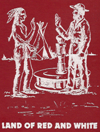 JOHN AND KATE CHAWKALINSKI
JOHN AND KATE CHAWKALINSKI
by William Chomlack
Mr. John Chawkalinski emigrated from Przemysl, Galicia, Poland to Canada in 1910. He arrived on the coast at Halifax by ship, which took about 18 days to cross the ocean. He took up employment in Eastern Canada for about two years. He worked in bush camps and other work to make enough money to support his family when they came over to this country. In 1912 his wife Katie Chawkalinski (nee Dominka) and his five children, Peter, John Jr., Mike, Mary, and Lillian, arrived in Canada.
The Chawkalinski family travelled west on a hot dusty train to Lamont (named after the Honorable Mr. Justice Lamont, formerly of the Supreme Court of Canada, 1906) which is near Edmonton, the capital city of Alberta. During the train trip they slept in their seats and ate what they could afford. Most of it was what they had bought at the town they left - such foods as bread and salted pork - and they got their water from the train. They travelled five days and nights.
At Lamont John Chawkalinski bought two oxen and a cart for $20. That is outrageously cheap nowadays, but these days the money's worth would be about $200. The family travelled with the oxen and cart via Vermilion to the district of Primula, where other countrymen were clearing new land. They arrived in this district in the month of April, 1912. John bought a homestead for $10. Their first home was a log house which had four plain walls, a single door, and a window. To keep the snow and wind from whipping through the house, and to keep as much warmth in as possible during the cold winter, they plastered cracks with moss and mud. The roof was constructed of hay and mud; the floor was just plain dirt.
The land was cleared by hand and plowed with oxen. It took a lot of energy and time to make it productive. Later on John purchased his first cow. They worked the farm for four years with oxen. When they travelled to town it took them about two days both ways to Vermilion, where they bought their supplies. On one occasion they went to Vermilion to the mill with about 400 pounds of wheat for flour. When they were returning with the flour on that sultry day the oxen were extremely hot. When the closest slough came into sight the oxen took off straight into it, where they lay down to cool off in about three feet of water and mud. No pulling or coaxing would make the animals move until nightfall. John had to carry the flour out onto dry land, ploughing through mud and water to get there. It was about six hours later and quite dark before they moved.
In 1916 John purchased his first team of horses, and from then on they had a more modern farm. As the years went by the homestead took shape. During all the hard work they had a lot to contend with, like bears prowling around the yard, and mosquitoes which were bigger than most, and that bit just as hard. Their first winter in Canada was one that they were not likely to forget. It was bitterly cold with lots of snow, which they had never before experienced in their life.
In 1922 their oldest daughter, Mary, at the age of 18 married Nazar Chomlack in the home of G.G. Pybus at Kitscoty, Alberta. The marriage ceremony was performed by Rev. Pybus. The newly married couple took up their homestead in the Primrose country. They raised 12 children. John Jr. farmed for a few years, but he didn't like it and went to the city to work. The youngest daughter, Lillian, also went to the city. Mike had a shoe shop in Dewberry. After Mike passed away Pete took over the shop. "Pete the Shoemaker", as everyone called him, put up a shop in the town of Clandonald. Next he had a shoe shop in Morinville. John Chawkalinski farmed until his passing on April 6, 1932.


